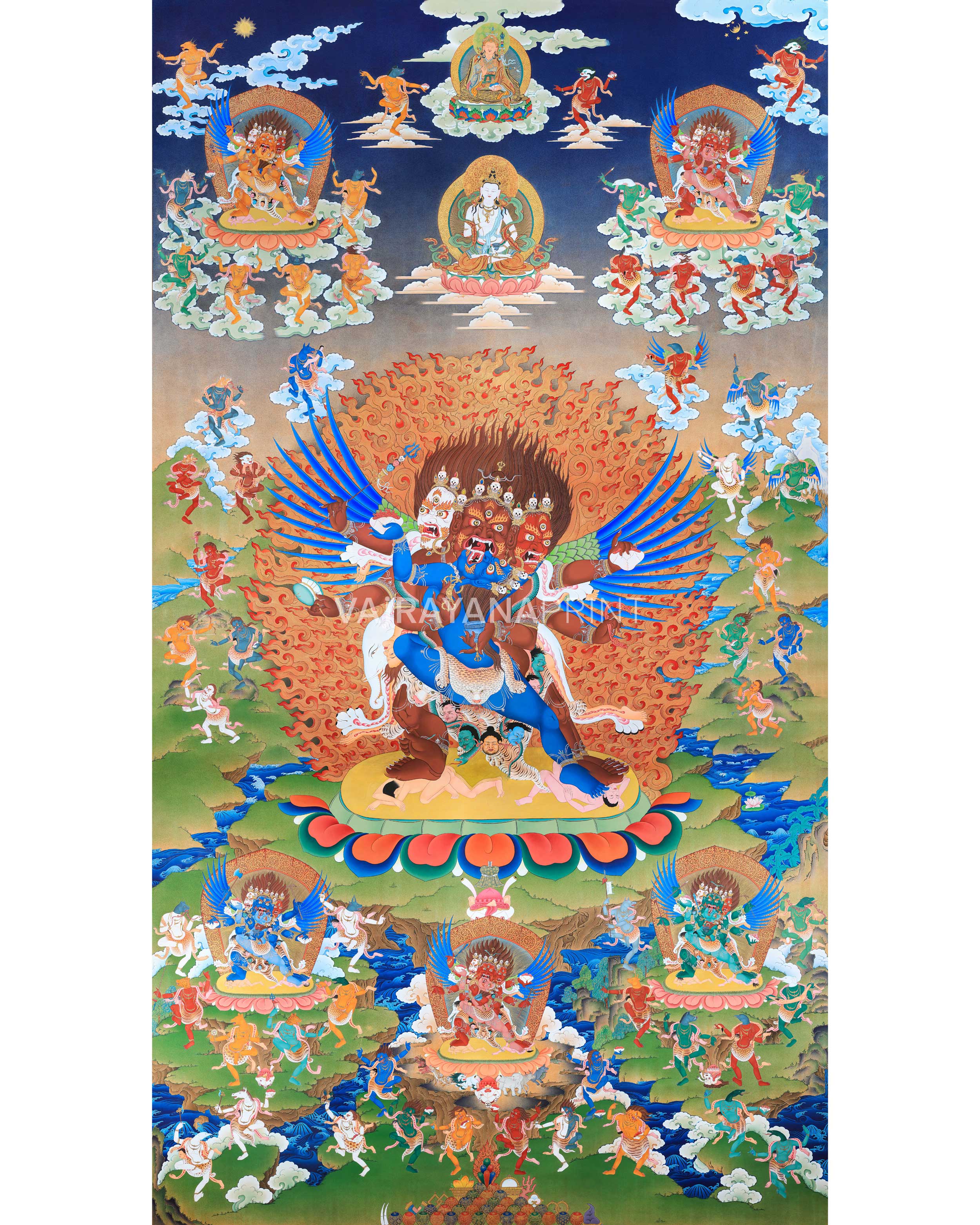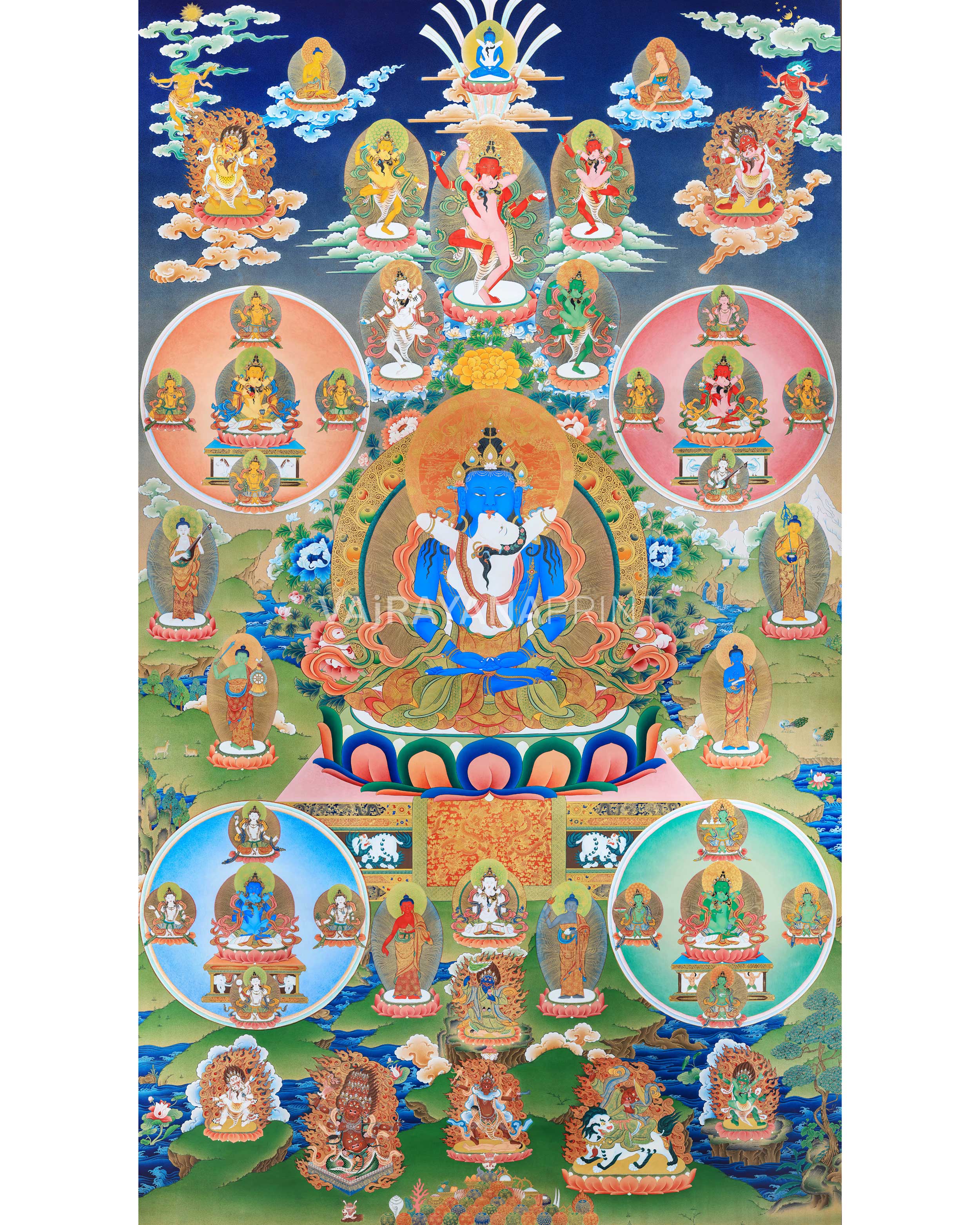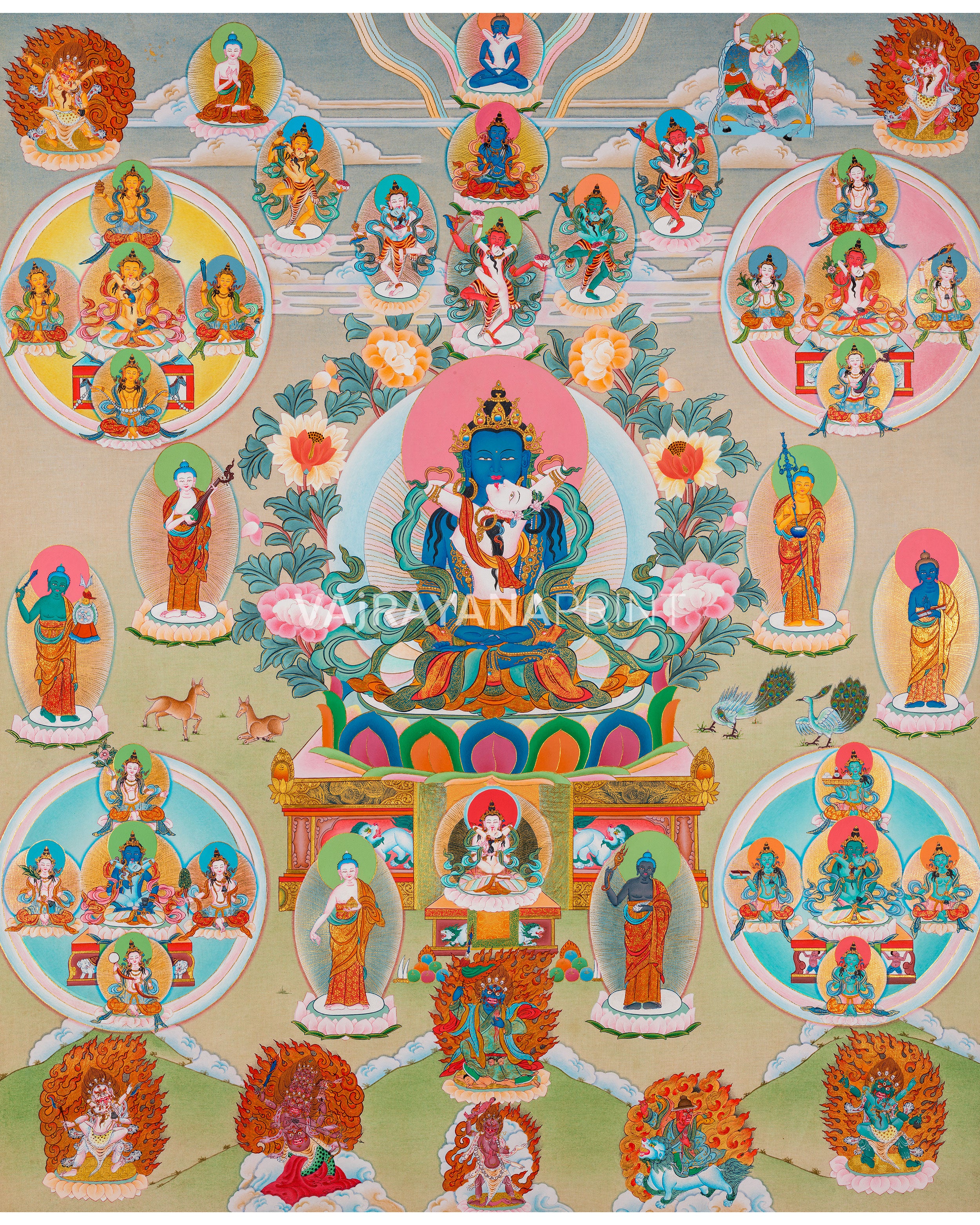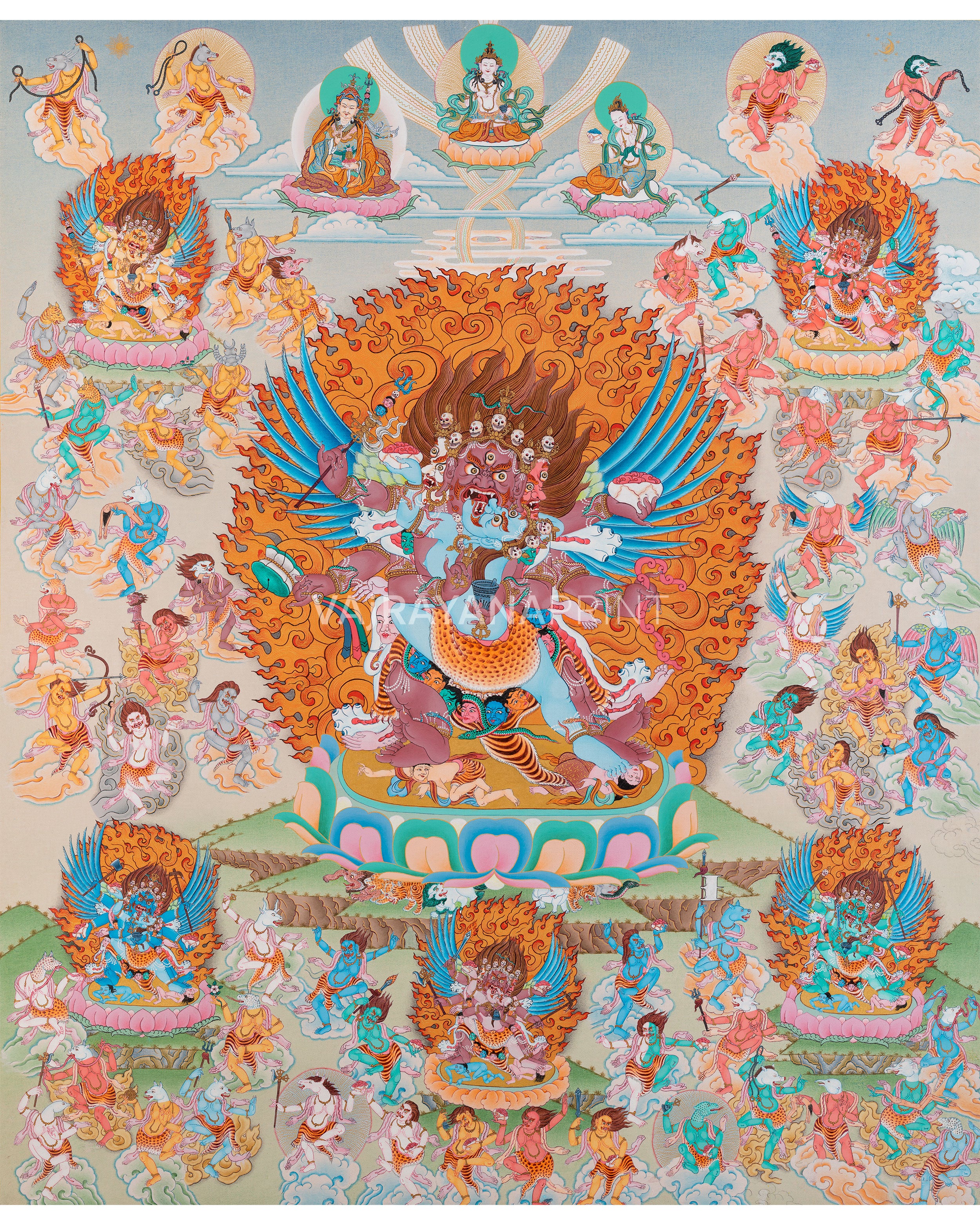Bardo Deities Prints
4 products
Showing 1 - 4 of 4 products
Bardo is the state between life and death, a concept that arose after the death of the Buddha. Some schools accepted it while others rejected it, as it stemmed from the Vedic-Upanishadic philosophical tradition. Our collection has two rather unique thangkas; one that depicts forty-two peaceful deities of Bardo, and fifty-eight wrathful deities of Bardo, both from the “Tibetan Book of the Dead.”
Bardo Deities: Divine Beings in Tibetan Buddhism's Intermediate States
The idea of the Bardo, or intermediate state, is central to the understanding of the soul's journey between death and rebirth in Tibetan Buddhism. Various Bardo deities have great significance within this framework and act as mentors and companions for the deceased. We shall examine the history, importance, characteristics, and allied beliefs of Bardo deities in this essay.
Background & Significance
A key idea in Tibetan Buddhism is the Bardo, which refers to the different stages of transition that a person's consciousness goes through before and after death. It is said that these states are essential for the soul's release from the samsara cycle, which is the cycle of birth, death, and reincarnation. During these phases, the deceased see divine entities known as bardo deities, who support and direct them toward a good rebirth.
In Tibetan Buddhism, the Bardo deities are vital because it is thought that they are essential in guiding the deceased through the frequently confusing and perplexing experiences of the intermediate states. The purpose of these deities is to guide the soul into a rebirth that optimizes the possibility of enlightenment by providing wisdom, protection, and direction.
Attributes & Iconography
Bardo deities frequently have distinguishing features that aid in recognizing and comprehending their functions. Typically, they are shown with distinctive looks, clothes, and symbols that allude to their heavenly essence and the virtues they stand for. For instance, serene Bardo deities are frequently depicted with peaceful expressions, but furious Bardo deities may have more savage looks.
One of the most well-known Bardo deities is Padmasambhava, who is credited with bringing Buddhism to Tibet and is frequently portrayed as a guru or teacher. He is represented by a lotus, a vajra (thunderbolt), and a trident, which stand for his proficiency in several facets of the spiritual path.
Associated Beliefs & Stories
Tibetan Buddhists hold that people encounter a range of Bardo deities, each representing a distinct facet of spiritual growth and transformation when they are in the Bardo states. These experiences are viewed as chances for the soul, detached from the false attachments and illusions of the human world, to realize its true nature.
It is said that the teachings of the Bardo deities provide direction on the way to enlightenment and are essential to achieving a positive rebirth—ideally in a state that allows one to carry on with one's spiritual journey.
To sum up, Bardo deities are central to Tibetan Buddhist practice and belief. Their role in the Bardo, or transitional state, is associated with assisting the departed in their journey toward a fortunate rebirth and, in the end, enlightenment. Through their unique attributes and teachings, these deities serve as spiritual companions on the journey from death to resurrection, offering profound insights and opportunities for the soul's liberation from the cycle of samsara.




